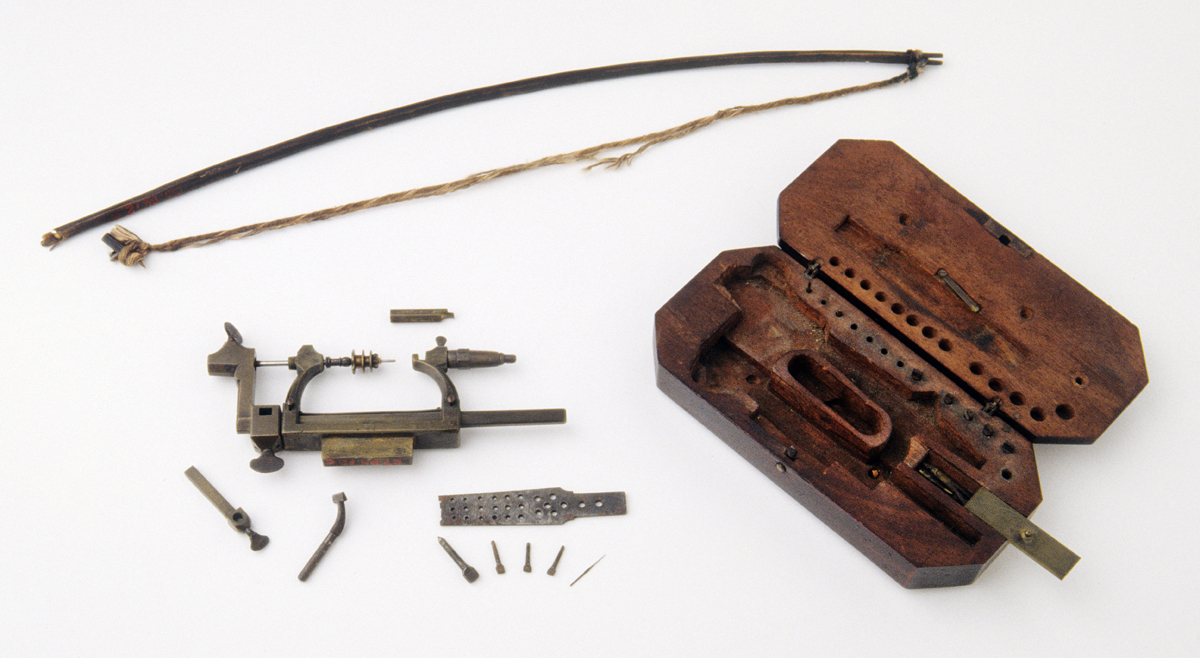Bow & Drill

The bow, barrel drills, smith's brace, and breastplate were needed by clockmakers and watchmakers for drilling holes in brass, iron, and steel. The bowstring was wrapped around the barrel of the drill and the blunt end of the arbor was inserted either in a breastplate or in one of several holes usually found on the side of a small clockmaker's bench vise; pushing and pulling the bow then rotated the drill. Craftsmen had to control the drill's speed carefully; too-rapid rotation created heat that would soften the temper of both the drill and the material adjacent to the hole being drilled.
Bow, 1760-1812. Nathaniel Dominy IV (maker). String; White oak. Iron. 21" (L). Museum purchase, from Nathaniel M. Dominy, 1957.0084.056

(Right) The breastplate bears the stamped initials FD and was undoubtedly made by Felix Dominy.
Breastplate, Felix Dominy, 1820-1835. Tulip; Steel plate. 7.0" (L). Mark: Stamped incuse "FD." Museum purchase, 1957.0084.055
(Left) A heavy iron brace, or bit stock, is the only survivor of a complement of tools used by the Dominys for drilling holes in hard steel or large holes in any type of metal. The blunt end of the brace fitted into a plate inserted in a drill beam, and metal bits were placed in the square hole visible at its opposite end. Because the drill beam was heavily weighted, great pressure could be brought to bear on the metal to be drilled.
Brace, Felix Dominy (maker or purchaser), 1820-1835. Iron. 10" (L). Museum purchase with funds provided by Henry Belin du Pont, 1957.0026.433

Barrel drills were well known to eighteenth-century craftsmen, who needed both skill and patience to pierce metals. Craftsmen had to control the drill's speed carefully; too-rapid rotation created heat that would soften the temper of both the drill and the material adjacent to the hole being drilled.
Activated by a watchmaker's bow, pivot hole drills made pivot holes in watch plates. The tapered end of the ivory shaft was fitted into a hollow in a puppet of a watchmaker's turn and a plate held against the bit. Use of these drills demanded uncommon skills. Perfect centering was required, the bit entering the face of the watch plate in an absolutely perpendicular position.
(Right) Watchmaker's Turn and Case, England, 1760-1812. Nathaniel Dominy IV (owner). Wood, brass, steel. Museum purchase, 1957.0084.12A

